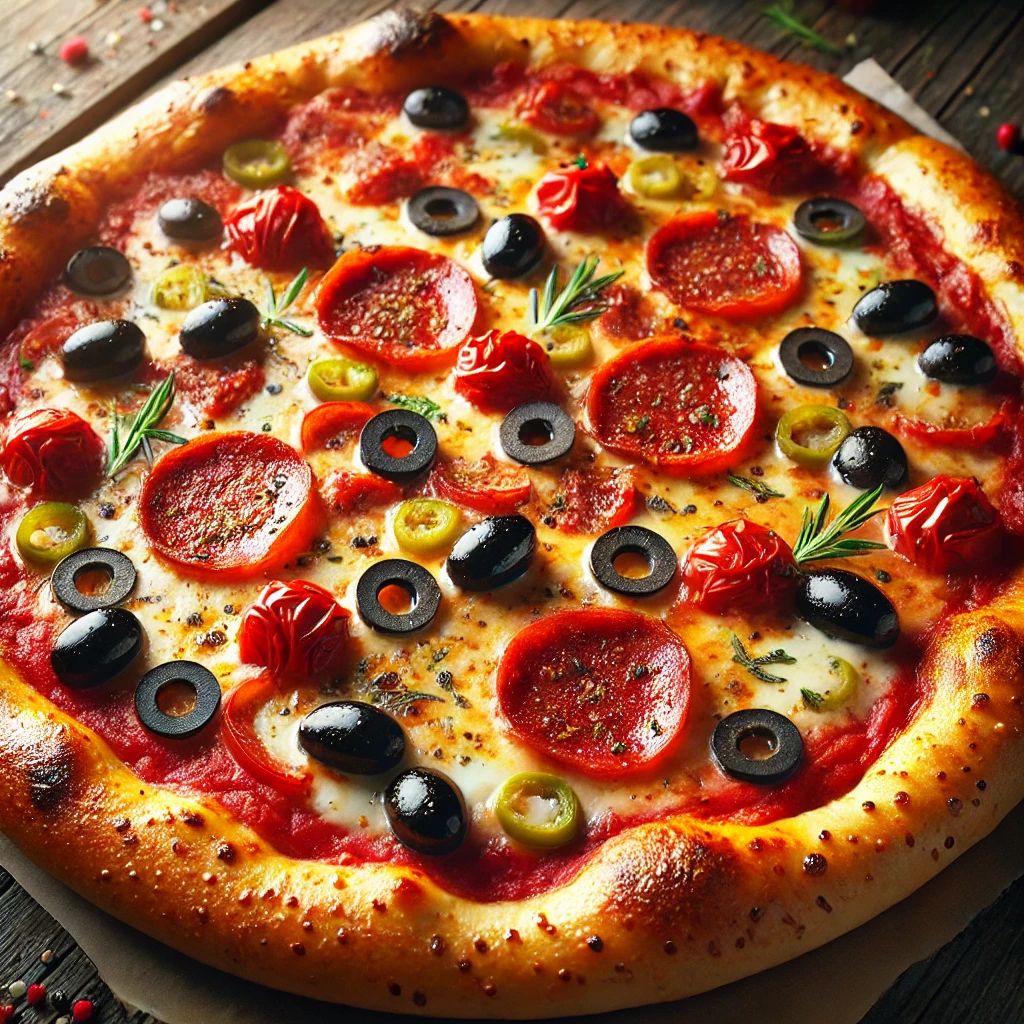Here’s a draft for your blog post article on the pizza stone, incorporating the points and story you shared:
When it comes to making the perfect pizza at home, a good pizza stone is a must-have. The stone ensures that your crust gets evenly baked and crisped just like in a brick oven. But with so many options out there, it’s important to know what to look for to make the best investment. Based on my experience, I recommend a 16-inch circular pizza stone, at least a half-inch thick, for most home ovens. Here’s why.
Maxing Out Your Oven Space
In most residential ovens, 16 inches is about the maximum size for a pizza stone. Anything larger, and you risk it not fitting properly. Before buying, make sure to measure your oven. If 16 inches is too tight, you can drop down to a 15-inch stone, but go as large as your oven can handle for the best results. A bigger stone gives you more room for pizza, and also helps distribute heat evenly throughout the baking surface.
Thickness Matters
When it comes to the thickness of the stone, go for at least half an inch. This may sound heavy, but trust me, it’s worth it. Thicker stones are more durable and hold heat better, which gives you that crisp crust and even baking. I’ve used thinner stones in the past, and after a while, they tend to crack, especially when they’re hit with moisture from cheese or toppings that drip during baking. Those molded stones you see? They’re often cheaper, but they’re also prone to breaking after repeated use. Investing in a solid half-inch thick stone will last you for years. Mine has been going strong for a long time with no issues.
The Best Way to Clean a Pizza Stone
A lot of people wonder how to clean their pizza stone properly. Scraping off any excess food is a good place to start, but over time, oil and cheese will accumulate, making the stone look dirty. The best method for cleaning, in my opinion, is if your oven has a self-cleaning feature.
During the self-cleaning cycle, your oven gets up to around 800-900 degrees, which essentially burns off all the residue and leaves your stone looking almost brand new. I’ve done this many times, and it works wonders! It’s so much easier than trying to scrub the stone by hand, and the high heat ensures that all the oils and baked-on messes are completely eliminated.
A Story About a Very Dirty Pizza Stone
Let me tell you a story to really drive this point home. I was at a friend’s house once, and out in his yard, I noticed a pizza stone lying around. It was covered in motor oil and all kinds of grime. This thing looked like it had been through the wringer—blackened, greasy, and probably forgotten. It was about 15 inches in diameter and around three-eighths of an inch thick. I asked my friend if I could have it, and he said, “Sure, take it. I don’t use it anymore.”
At first, I wasn’t sure if I could save it, given all the chemicals and years of buildup on it, but I decided to throw it in my oven and put it through a self-cleaning cycle. To my surprise, that stone came out bleached white and looking brand new. It went from being unusable to being perfectly clean and ready for baking.
Since then, I’ve been a firm believer in the self-cleaning oven method for maintaining pizza stones, especially when there’s heavy buildup.
Why a Solid, Thick Stone is Better
Besides being easier to clean, a thicker stone can withstand a lot more wear and tear. With thinner stones, especially the cheaper molded ones, moisture from cheese or liquids can eventually cause the stone to split or break in half. This is something you won’t have to worry about with a solid half-inch thick stone.
I’ve had my current pizza stone for years, and it’s still in perfect shape. I’ve baked countless pizzas on it, and it’s stood up to the test of time. If you’re serious about making great pizza at home, a 16-inch circular, half-inch thick stone is the way to go.
Final Thoughts
A good pizza stone can make all the difference when it comes to baking the perfect pizza. Whether you’re making thin-crust or deep-dish, the right stone will ensure your pizza bakes evenly and comes out with a beautifully crisp crust. When choosing a pizza stone, go for size and thickness that will last—preferably 16 inches if your oven allows and no less than half an inch thick for durability.
And remember, when it comes time to clean it, let your oven do the heavy lifting. Just run it through a self-cleaning cycle, and you’ll have a stone that looks as good as new. With the right care, your pizza stone will last you for many years of perfect pizzas!
